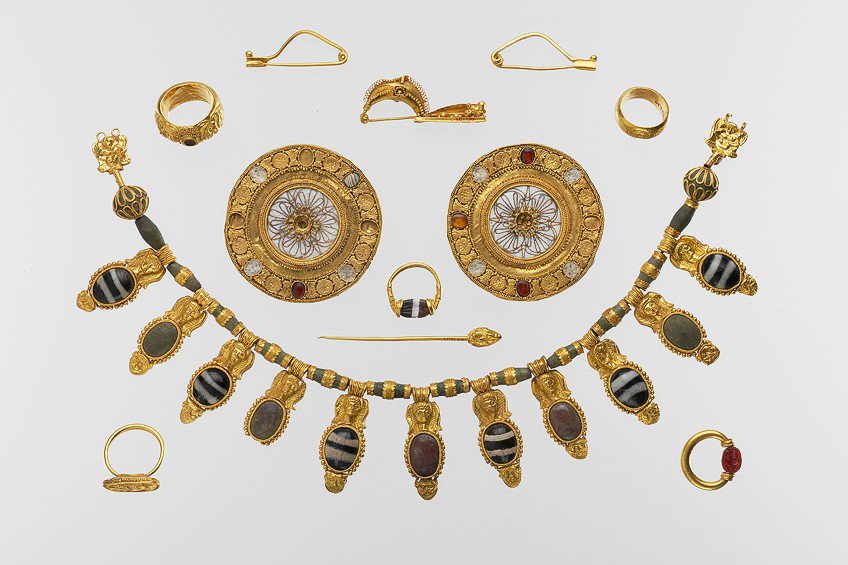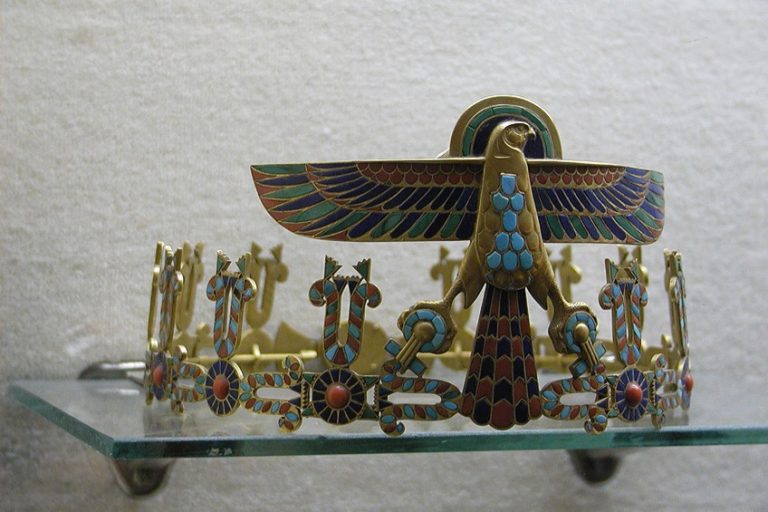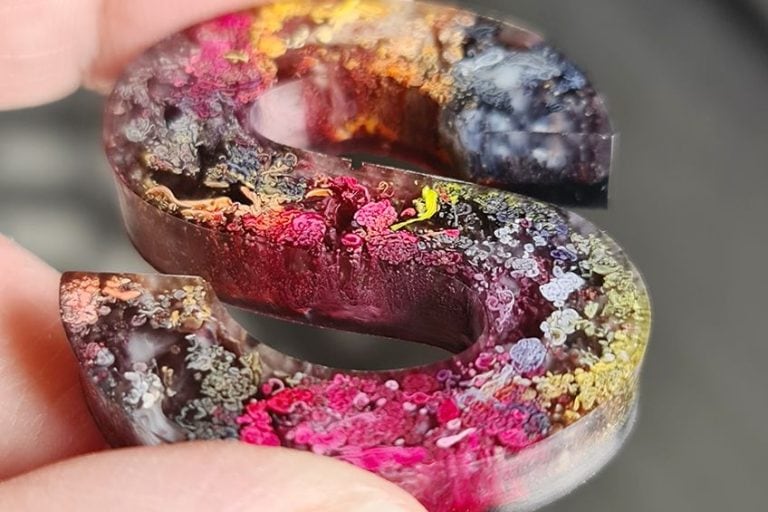Ancient Greek Jewelry – Timeless Elegance and Craftsmanship
Ancient Greek jewelry, renowned for its exquisite craftsmanship and symbolic meaning, offers a fascinating glimpse into the artistry and culture of classical Greece. Created primarily from gold, silver, and precious stones, these adornments were not merely decorative but also carried significant cultural and religious connotations. From intricately designed necklaces and bracelets to elaborate earrings and diadems, Ancient Greek jewelry reflected the wealth, status, and beliefs of its wearers. Often inspired by nature, mythology, and everyday life, these pieces highlight the sophisticated aesthetic sensibilities and technical skills of Greek artisans, whose influence continues to be felt in contemporary jewelry design today.
Key Takeaways
- Ancient Greek jewelry showcases exquisite craftsmanship and cultural richness.
- Designs included mythological motifs, animals, and celestial symbols.
- These adornments symbolized power, status, and religious beliefs.
Historical Significance and Cultural Impact
Ancient Greek jewelry is a fascinating reflection of the civilization’s advanced artistry and rich culture. The exquisite pieces crafted during the Hellenistic period, in particular, highlight the Greeks’ mastery of gold, gemstones, and pearls. These adornments were not merely decorative; they served as symbols of power, status, and affinity with the gods.
The designs often featured motifs from mythology, animals, and celestial bodies, showcasing the Greeks’ deep connection to their beliefs and the natural world.
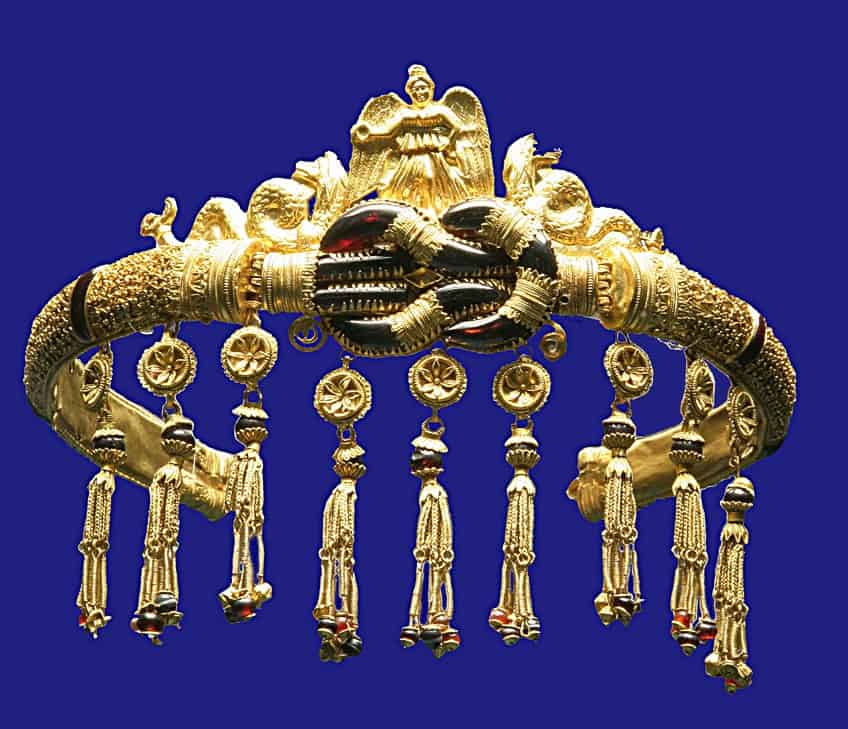
Each item, from elaborate necklaces to delicate earrings, was meticulously crafted, embodying the sophistication and elegance that characterized ancient Greek society. Exploring this jewelry offers a glimpse into the daily lives, beliefs, and artistic achievements of the ancient Greeks. The enduring legacy of their craftsmanship continues to inspire modern jewelry design, bridging the past with the present in extraordinary ways.
Role in Ancient Greek Society
Jewelry in ancient Greek society symbolized wealth, status, and power. Earrings, necklaces, and bracelets were commonly worn by both men and women. These adornments often indicated social rank and were meticulously crafted from precious metals such as gold and silver.
The craftsmanship of Greek jewelry demonstrated high levels of skill. Items such as diadems and wreaths were not merely decorative but also served as prizes in athletic competitions and offerings to the gods.
Gold, emeralds, and pearls were frequently used materials, manifesting the wealth and aesthetic appreciation of the Greeks. Marriage and religious ceremonies also saw extensive use of jewelry. Brides wore elaborate pieces to signify their change in status. Jewelry was often buried with the dead, indicating a belief in an afterlife where these items held value.
Influence of Greek Mythology on Jewelry Design
Greek mythology had a significant influence on jewelry design. Many pieces featured motifs from myths and legends, which acted as talismans or sources of inspiration. Ganymede earrings, inspired by the myth of Ganymede, are notable examples. These designs were not only decorative but also held symbolic meanings, representing protection or favor from the gods.
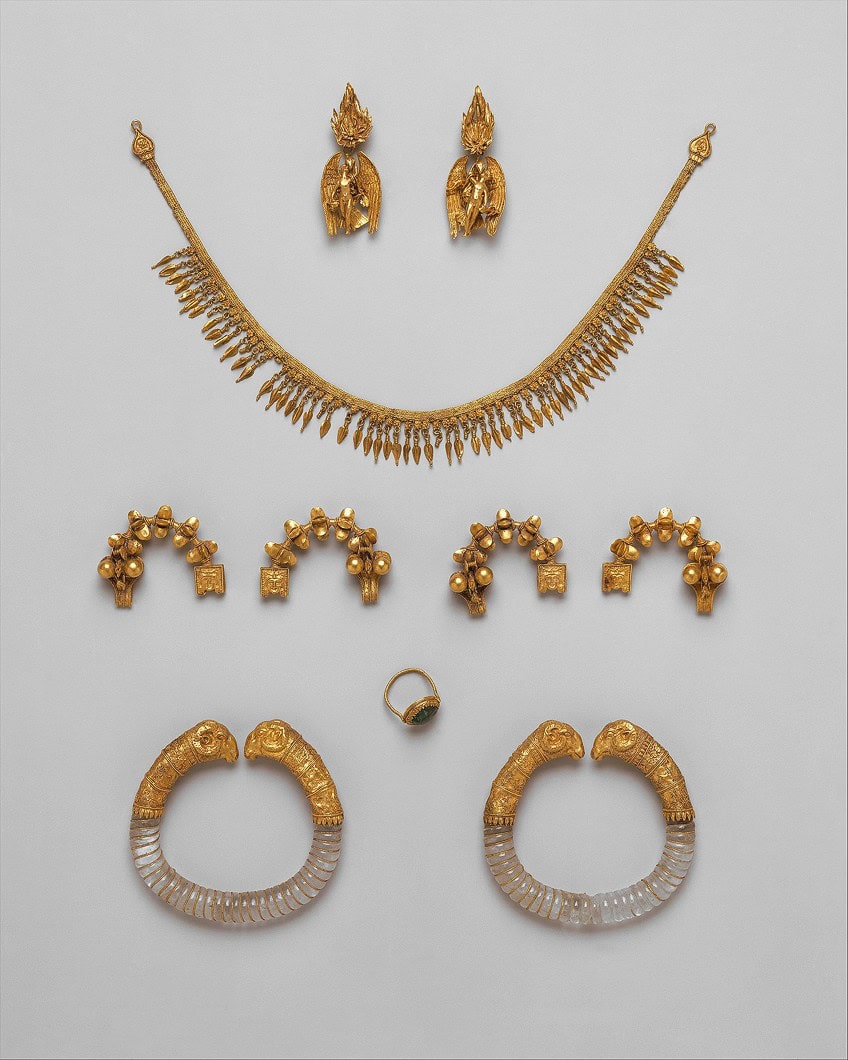
Medallions and pendants often depicted gods and goddesses, heroes, and mythological creatures. These symbols were thought to bring luck or protection to the wearer. Hellenistic jewelry frequently included images of Athena, Aphrodite, and Nike, reflecting their esteemed positions in Greek culture. Jewelry pieces sometimes carried inscriptions invoking divine protection or blessings. Mythological narratives captured in jewelry design underline the deep connection between daily life and spiritual beliefs in ancient Greece.
Interactions With Other Cultures
The conquests of Alexander the Great expanded Greek influence across the Persian Empire, Egypt, Asia Minor, and even into India. This resulted in the integration of foreign elements into Greek jewelry designs. Eastern influences introduced new motifs, techniques, and materials to Greek artisans. Greek jewelry incorporated Persian styles, such as bracelets worn in pairs.
The exchange between Greek and Egyptian cultures led to the adoption of new forms like scarab amulets.
Gold and gemstones imported from conquered territories increased the variety and richness of materials available to Greek jewelers. Trade routes facilitated the flow of designs and techniques between Greece and other civilizations. This cultural interplay enriched Greek jewelry, resulting in pieces that reflected a blend of Greek aesthetic ideals with influences from across a vast empire.
Materials and Craftsmanship
Ancient Greek jewelry is noted for its use of a wide array of metals and gemstones, combined with advanced techniques and innovations in metalworking.
Metals and Gemstones Used
Greek craftsmen primarily utilized gold, silver, and bronze in their jewelry. Gold, due to its malleability and resistance to tarnish, was the most favored metal. Notable gemstones included sapphires, emeralds, garnets, and pearls, each chosen for their beauty and rarity.
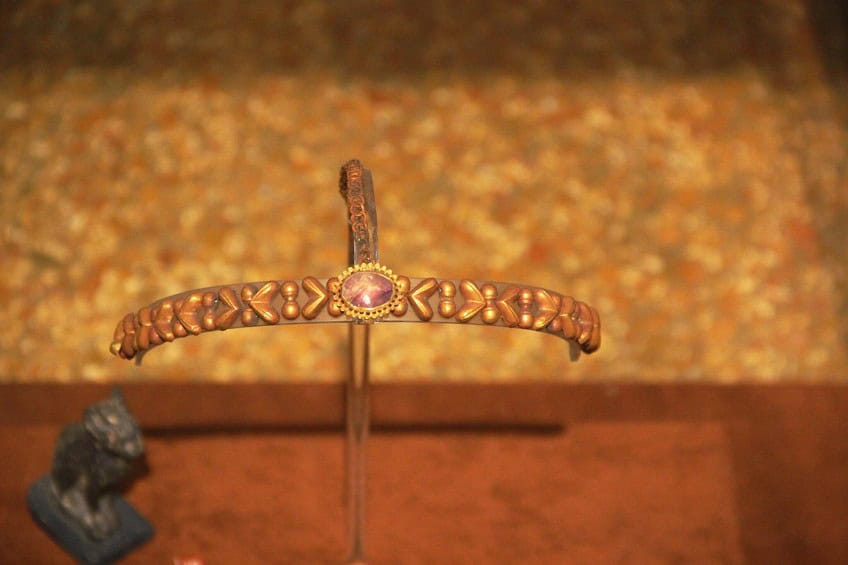
Lapis lazuli, amethyst, and jade were also used, though these were less common. Bronze often served as a base for items meant for everyday wear, while silver was occasionally used for more elaborate pieces. Craftsmen skillfully integrated these materials, creating striking combinations and intricate patterns.
Techniques and Innovations in Metalworking
Greek jewelry makers developed sophisticated techniques in metalworking. They excelled in practices such as granulation, where tiny beads of metal were fused to a larger surface to create intricate patterns. Filigree, involving delicate twists and spirals of metal wire, was also commonly employed.
Repoussé and chasing techniques were used to work designs into metal surfaces by hammering from behind and from the front, respectively.
Casting methods permitted the creation of complex shapes and forms. Additionally, inlay was practiced, embedding gemstones into metal settings with exceptional precision, showcasing their craftsmanship. These innovations not only reflect their technical skill but also their aesthetic vision, leading to jewelry pieces that were not just ornaments but also symbols of power, status, and artistic excellence.
Iconography and Symbolism
Ancient Greek jewelry often featured intricate designs and motifs that held significant meaning. Key elements included depictions of gods, mythological figures, and various animal and plant motifs.
Depiction of Gods and Mythological Figures
Many pieces showcased gods and goddesses to invoke their protection or favor. Zeus, the king of gods, was often symbolized through eagles and lightning bolts. Athena appeared with her owl, representing wisdom. Aphrodite, the goddess of love, was frequently depicted alongside Eros, her companion.
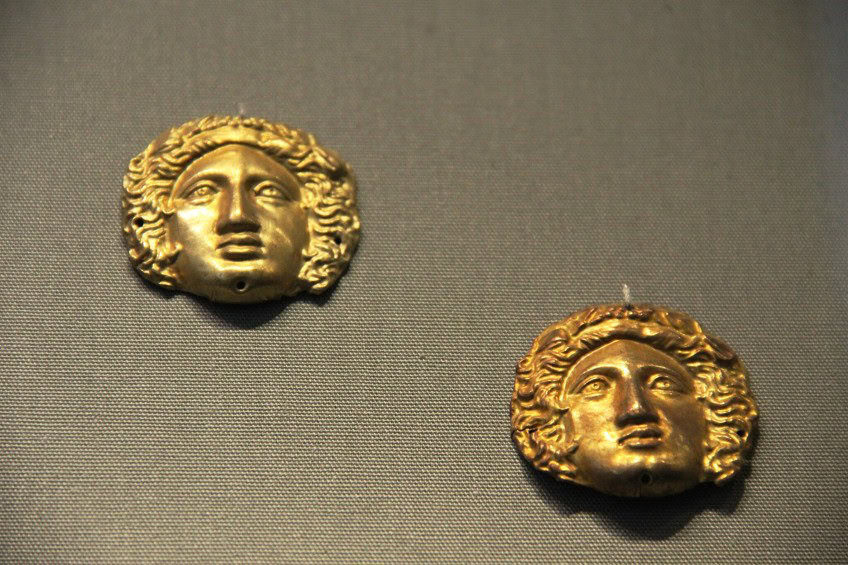
Jewelry featuring them was believed to attract love and beauty. Dionysus, the god of wine, was commonly shown with grapevines. Heroic figures like Herakles also made appearances. The Herakles Knot, symbolizing strength and protection, was a popular motif in bracelets and necklaces.
Use of Animal and Plant Motifs
Animal motifs were prevalent, often representing traits associated with the depicted creature. Lions symbolized strength and courage, while dolphins were linked to the sea and good fortune. Birds, especially eagles, were connected to the gods.
Plant motifs carried their own meanings.
Olive branches signified peace and victory. Laurel wreaths, often linked to Apollo, were symbols of achievement. The marriage knot, a specific plant motif, symbolized eternal love and unity. Various gemstones, such as emeralds and garnets, were also used. These stones were believed to carry protective and healing properties, adding another layer of meaning to the jewelry.
Jewelry Types and Functional Items
Ancient Greek jewelry served both decorative and functional purposes, often reflecting the wearer’s status and wealth. This includes various ornaments used in daily life and ceremonial contexts.
Ornaments for Ceremonies and Daily Life
Jewelry was an essential aspect of both ceremonial and everyday attire in Ancient Greece. Items such as earrings, necklaces, and pendants were popular among both men and women. Diadems and wreaths adorned the heads of participants in religious rituals. Bracelets and armbands were commonly worn, sometimes in pairs, a fashion inspired by Persian practices.
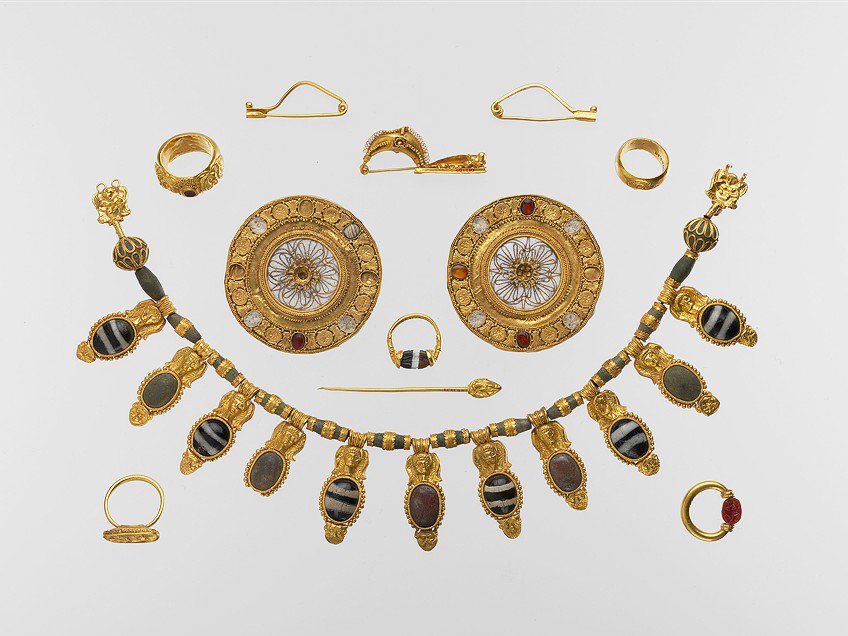
Hair ornaments like pins and elaborate brooches were not only decorative but also functional, helping to secure hairstyles. Rings often featured engraved gemstones like garnets, serving both decorative and symbolic purposes. The Walters Art Museum in Baltimore, Maryland, preserves many such examples, showcasing their historical significance.
Status Symbols and Objects of Wealth
Jewelry in Ancient Greece also functioned as symbols of status and wealth. Gold became a primary material during the Hellenistic Period due to increased trade and conquests. Necklaces, armbands, and bracelets made from gold showcased the wearer’s affluence. Items like pendants embedded with precious stones were equally significant as wealth indicators.
Objects found in tombs reflect the high status of the deceased, demonstrating wealth and social standing. Greek art often depicted citizens adorned with lavish jewelry, highlighting societal norms and values. Greek jewelry, especially pieces adorned with gemstones, played a crucial role in portraying an individual’s position within society. These artifacts remain critical for understanding the cultural and social dynamics of ancient Greece.
Ancient Greek jewelry stands as a testament to the remarkable artistry and cultural richness of classical Greece. These intricately crafted pieces not only served as personal adornments but also embodied the values, beliefs, and social hierarchy of the time. The enduring beauty and influence of Greek jewelry continue to captivate modern audiences, reflecting the timeless elegance and innovation of Greek artisans. As we study these treasures today, they offer invaluable insights into the lives and aesthetics of one of history’s most influential civilizations, bridging the past with the present.
Frequently Asked Questions
What Materials Were Commonly Used to Make Ancient Greek Jewelry?
Ancient Greek jewelry was crafted using metals such as gold, silver, and bronze. Gold became especially prominent during the Hellenistic Period. Bone, teeth, pebbles, and horns were used in earlier, rudimentary pieces.
What Types of Jewelry Were Popular in Ancient Greek Culture?
Popular types of jewelry included earrings, necklaces, bracelets, and rings. Brooches and pins were also common and served both decorative and functional purposes.
Which Gemstones Were Frequently Used in Ancient Greek Jewelry Pieces?
Gemstones like sapphires, garnets, and pearls were frequently used. Other materials included amethyst, lapis lazuli, and jade. The Mycenaeans also featured gems depicting various designs.
How Did Social Status Influence Jewelry Wearing in Ancient Greece?
Jewelry often signified one’s social status. Higher social classes wore more elaborate and ornate pieces, usually made of precious materials like gold and decorated with gems.
Isabella studied at the University of Cape Town in South Africa and graduated with a Bachelor of Arts majoring in English Literature & Language and Psychology. Throughout her undergraduate years, she took Art History as an additional subject and absolutely loved it. Building on from her art history knowledge that began in high school, art has always been a particular area of fascination for her. From learning about artworks previously unknown to her, or sharpening her existing understanding of specific works, the ability to continue learning within this interesting sphere excites her greatly.
Her focal points of interest in art history encompass profiling specific artists and art movements, as it is these areas where she is able to really dig deep into the rich narrative of the art world. Additionally, she particularly enjoys exploring the different artistic styles of the 20th century, as well as the important impact that female artists have had on the development of art history.
Learn more about Isabella Meyer and the Art in Context Team.
Cite this Article
Isabella, Meyer, “Ancient Greek Jewelry – Timeless Elegance and Craftsmanship.” Art in Context. December 10, 2024. URL: https://artincontext.org/ancient-greek-jewelry/
Meyer, I. (2024, 10 December). Ancient Greek Jewelry – Timeless Elegance and Craftsmanship. Art in Context. https://artincontext.org/ancient-greek-jewelry/
Meyer, Isabella. “Ancient Greek Jewelry – Timeless Elegance and Craftsmanship.” Art in Context, December 10, 2024. https://artincontext.org/ancient-greek-jewelry/.


